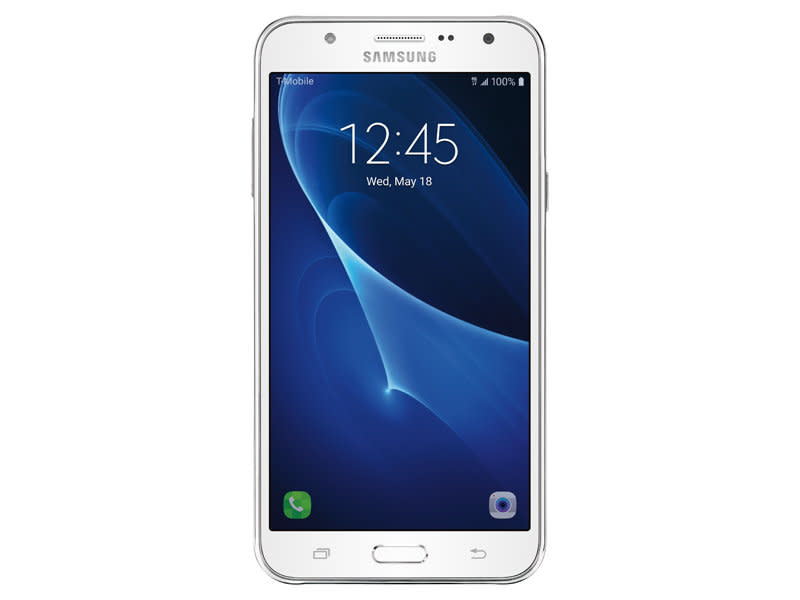Samsung’s budget phones are cheap, but that’s not enough
Plenty of other companies do better for the price.
Samsung leads the pack when it comes to high-end Android phones, but its understanding of the mid-range and budget market is seriously lacking. On Monday, the company unveiled its new Galaxy J7 and J3 unlocked handsets, which cost $220 and $150 respectively. For those pocket-friendly prices, you're getting the Galaxy branding and, really, not much else. It's not enough to simply be cheap anymore. A budget phone needs to deliver a solid -- and modern -- experience. This is a lesson that its rivals, especially ZTE, have learned, but Sammy seems content to flesh out its lineup with aging tech.
Let's first look at what's inside these subpar Galaxy-branded phones. In addition to a 1.6GHz octa-core processor and an 8-megapixel rear camera, the Galaxy J7 packs a 5.5-inch display that has a resolution of merely 720p. As our own Chris Velazco put it, "You'll cut your eyes on those jagged edges." The J7's one redeeming feature is that you can swap out its removable 3,300mAh battery, although if that's all the phone has going for it you might as well swap out the handset altogether.
Things get really bleak when you compare the J7's specs with other phones at the same price (or in some cases, that are cheaper). In that range, you have the Huawei Honor 6x ($200), the Moto G5 Plus ($230) and the ZTE Blade V8 Pro ($230), which all offer sharper 1080p displays. The Honor and Blade both sport 5.5-inch screens, while the Moto's comes in 5- or 5.2-inch variants. They all have much higher pixel density and produce crisper images.

All three have better cameras than the J7, too. Both the Honor and Blade offer dual-camera systems, which create that artificial depth-of-field / blurred-out background effect everyone loves so much. The G5 Plus only has one camera, but it's the same 12-megapixel one found on the Galaxy S7, which is an excellent shooter. The J7, in contrast, has a measly 8-megapixel rear sensor and a 5MP setup in front.
The trio of rivals also have comparable batteries. The Honor has a 3,340mAh cell, the Blade's is 3,140mAh, while the Moto offers just 3,000mAh. None of these are removable, though, so the Galaxy J7 has the slight upper hand (for those who care about swapping out a battery pack, anyway).
But then there's the processors. The Honor uses Huawei's own 2.0GHz octa-core Kirin 655 chipset, while the Blade and Moto both use 2.0GHz octa-core Snapdragon CPUs. By comparison, the J7's 1.6GHz chip is practically lethargic.

More-established budget phone makers already know the importance of the illusion of quality. ZTE, in particular, learned from its failed crowdfunding project that its customers want a near-premium set of specs. For its crowdsourced eye-detecting handset, the company initially proposed a mid-range set of components to keep costs low. After people complained about the unimpressive specs, ZTE has scrapped the Kickstarter and is now working on bringing a better-equipped device to market.
But, ZTE learned its lesson. Samsung clearly doesn't understand what people expect from a budget phone today. In fact, it should be ashamed of slapping a 720p screen on a 5.5-inch device. The J7 and J7 Plus feel like they were designed for another country or even another time... specifically 2012. If you are considering a low-cost phone and only have $220 to spare, there are plenty of better options.












